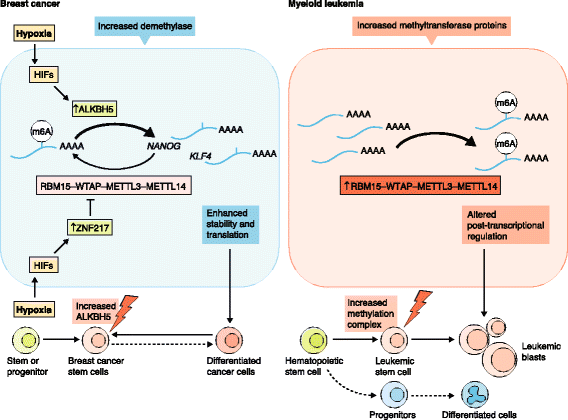Emerging links between m6A and misregulated mRNA methylation in cancer
- PMID: 28081722
- PMCID: PMC5228104
- DOI: 10.1186/s13073-016-0395-8
Emerging links between m6A and misregulated mRNA methylation in cancer
Abstract
N 6-methyladenosine (m6A) in mRNA has emerged as a crucial epitranscriptomic modification that controls cellular differentiation and pluripotency. Recent studies are pointing to a role for the RNA methylation program in cancer self-renewal and cell fate, making this a new and promising therapeutic avenue for investigation.
Figures

References
MeSH terms
Substances
LinkOut - more resources
Full Text Sources
Other Literature Sources

